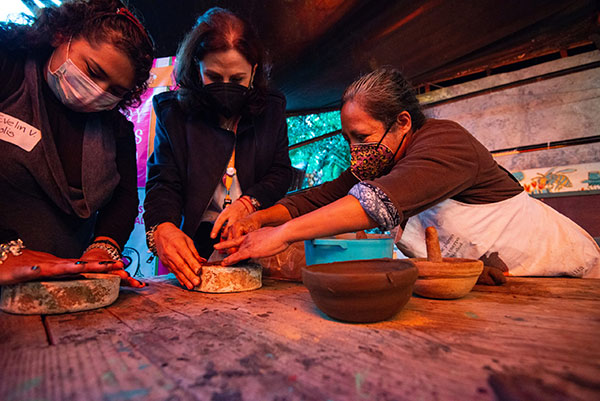Mongolia: Training Artisanal Gold Miners To Go Mercury Free
Project Overview
Direct contact, water, soil
Current project
In Mongolia, our workshops have, to date, trained over 1000 artisanal gold miners to go mercury free, with many more on the waiting list. On a return visit, we observed that some of the miners we trained have in turn begun training other miners.
Background
The overall goal of the project is to build the capacity of new ASGM technologies that don’t involve mercury. We look to engage miners and other stakeholders on the issue of mercury reduction in ASGM, train and convert miners to the mercury-free method, monitor their compliance to the method, and train government agencies in best practices for scale up.
The Project’s Inception workshop was organized on 13th of February 2014 in Ulaanbaatar. In total 34 participants, including officials from ministries of Mining and Health, Mineral Resource Authority, officers of Ulaanbaatar office of the World Health Organization, heads of artisanal mining NGOs, officers from other international organizations like Swiss Development Cooperation and Asia Foundation, Sustainable Artisanal Mining project staffs, researchers from National Centers of Public Health and ESCM project officers. Ms. Sugar, manager of Ulaanbaatar EU office has also attended the workshop. The participants expressed a high interest in learning project objectives, outputs and activities through various questions and comments and expressed in cooperation for the project activities.
20% of Rural Mongolian Workforce are Gold “Ninjas”
Between 1999 and 2002, Mongolia experienced three consecutive dry summers followed by extraordinarily harsh winters (apparently worse than the balmy -31F I was experiencing). During this period, 11 million livestock animals perished, wiping out the income source for much of the rural population.
These events, combined with a surge in the price of gold, enticed more than 100,000 Mongolians (20% of the rural workforce) into the small-scale gold mining business by 2007.Throughout the country, these miners are referred to as “ninjas.” The etymology of the term ninja seems to stem from the green panning bowls that the miners carry on their back, resembling the Teenage Mutant Ninja Turtles.
This sudden and dramatic increase in informal mining activity threatened both the environment and public health. The primary risk was the widespread use of mercury to separate gold from mined dirt and rock. Mercury is a deadly neurotoxicant. Once released into the environment, it can quickly enter the food chain and poison people and animals.
In 2008, the Mongolian government banned the use of mercury in mining. Without a suitable alternative, many miners were immediately faced with the choice of either losing their livelihood or continuing their work illegally. With the generous support of the European Union, Blacksmith Institute is now working to provide such an alternative.
Project Activities:
Although ASGM is relatively new livelihood activity in Mongolia, it continues to rise as an increasingly important economic activity in Mongolia. Despite the overall slow in economic growth in 2014, mining was one of the few economic sectors that grew. There are currently an estimated 100.000 miners working in about 18 provinces throughout the country, almost 50% of whom are women.
Pure Earth and the Environment and Security Center of Mongolia (ESCM) collaborated on a two-year project to improve the economic and environmental sustainability of ASGM, and reduce poverty in ASGM areas in Mongolia.
A year after the project start, more than 700 small-scale gold miners (42.5% are women and 3.1% are pensioners) were trained in Tov, Selenge and Bayankhongor provinces in mercury-free, more efficient ASGM techniques. Most of these trainees live below government set poverty level. 35 local miners were trained by Filipino experts to teach a mercury-free method to other miners. This led to an increase in efficiency of ore processing and reduced environmental impacts. The introduced methods were not only applicable to Mongolian ore, but were also well received by miners.
In addition, our work in Mongolia includes educating the community. Outreach efforts include a mobile teaching van that goes out into the community, as well as visits to schools.
Learn more below in The Pollution Blog:





